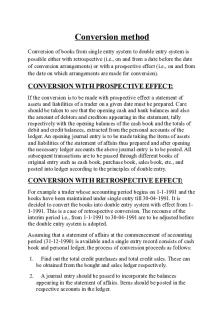Huntington-Hill Method PDF

| Title | Huntington-Hill Method |
|---|---|
| Course | Explorations In Modern Mathematics |
| Institution | Kent State University |
| Pages | 2 |
| File Size | 64.7 KB |
| File Type | |
| Total Downloads | 56 |
| Total Views | 177 |
Summary
Explanation and Practice Examples about Huntington-Hill Method. ...
Description
MATH 11008:
Huntington-Hill Method
• The Hill-Huntington Method is the current method Congress uses to apportion the U.S. House of Representatives. This method was originally proposed in 1911 by Joseph Hill, the Chief Statistician of the Bureau of the Census, and later improved and refined by Edward Huntington, a Professor of Mechanics and Mathematics at Harvard University. • It was passed in what became known as the 1941 Apportionment Act. This act had three key elements: 1. It set the Huntington-Hill Method as the permanent method for apportionment of the House of Representatives. 2. It made the decennial apportionments self-executing (once the official population figures are in, the apportionment formula is applied automatically and changes take effect without the need for congressional approval). 3. It permanently fixed the size of the House of Representatives at 453 seats (with an exception made if a new state were to join the Union). • The Huntington-Hill Method uses the geometric mean as it cutoff numbers.
Geometric Mean The geometric √ mean of two positive numbers a and b is the number G = a · b.
Example 1: Determine the geometric mean for the following pairs of numbers. Round answers to three decimal places. (a)
5 and 15
(b)
27 and 32
(c)
31 and 32
2
MATH 11008:
HUNTINGTON-HILL METHOD
The Hill-Huntington Method 1. Find a “suitable” divisor D. (Here suitable divisor means a divisor that produces an apportionment of exactly M seats when the quotas are rounded using the Huntington-Hill rounding rule.) 2. Find the apportionment of each state by rounding its quota using the Huntington-Hill rounding rule. For a quota q, let L denote its lower quota, U its upper quota, and G the geometric mean of L and U . ◦ If q < G, then round q down to L. ◦ If q ≥ G, then round q up to U .
Example 1: A small country consists of five states A, B, C, D and E with the populations listed in the following table. Use the Hill-Huntington Method to apportion the 40 seats in the legislature. State Population
State Population A 34,800 B
105,100
C
65,100
D
140,200
E
54,800
Total
400,000
A 34,800
B 105,100
Modified quota
C 65,100
D 140,200
E 54,800
Total 400,000
Huntington-Hill cutoff Huntington-Hill apportionment...
Similar Free PDFs

Biscuit Method
- 2 Pages

IRAC Method
- 2 Pages

IRAC Method
- 2 Pages

Jefferson\'s Method
- 3 Pages

Bloomberg method
- 26 Pages

Management Method
- 10 Pages

Webster\'s Method
- 3 Pages

Secant Method
- 9 Pages

IRAC Method
- 2 Pages

Inventory method
- 13 Pages

Ordinary method
- 20 Pages

Method Validation
- 52 Pages

Conversion method
- 4 Pages

BTC method
- 1 Pages

Lumen Method
- 13 Pages

Plurality Method
- 2 Pages
Popular Institutions
- Tinajero National High School - Annex
- Politeknik Caltex Riau
- Yokohama City University
- SGT University
- University of Al-Qadisiyah
- Divine Word College of Vigan
- Techniek College Rotterdam
- Universidade de Santiago
- Universiti Teknologi MARA Cawangan Johor Kampus Pasir Gudang
- Poltekkes Kemenkes Yogyakarta
- Baguio City National High School
- Colegio san marcos
- preparatoria uno
- Centro de Bachillerato Tecnológico Industrial y de Servicios No. 107
- Dalian Maritime University
- Quang Trung Secondary School
- Colegio Tecnológico en Informática
- Corporación Regional de Educación Superior
- Grupo CEDVA
- Dar Al Uloom University
- Centro de Estudios Preuniversitarios de la Universidad Nacional de Ingeniería
- 上智大学
- Aakash International School, Nuna Majara
- San Felipe Neri Catholic School
- Kang Chiao International School - New Taipei City
- Misamis Occidental National High School
- Institución Educativa Escuela Normal Juan Ladrilleros
- Kolehiyo ng Pantukan
- Batanes State College
- Instituto Continental
- Sekolah Menengah Kejuruan Kesehatan Kaltara (Tarakan)
- Colegio de La Inmaculada Concepcion - Cebu